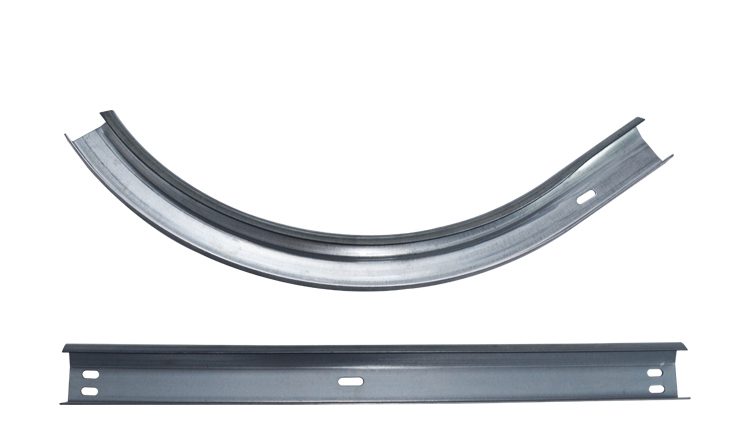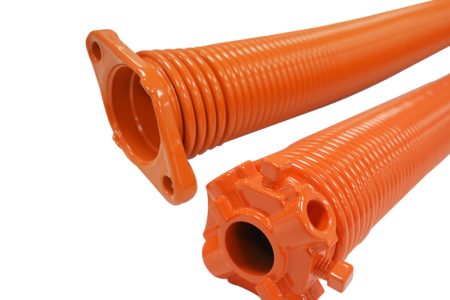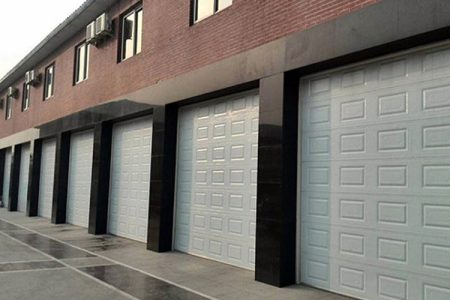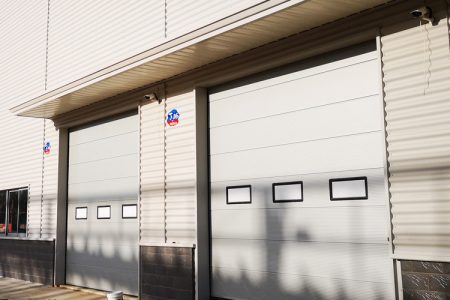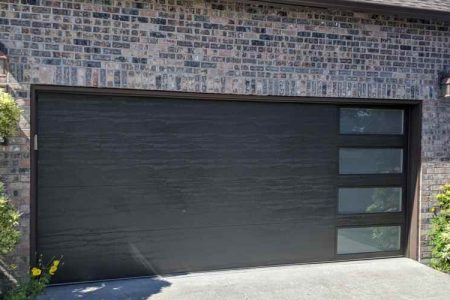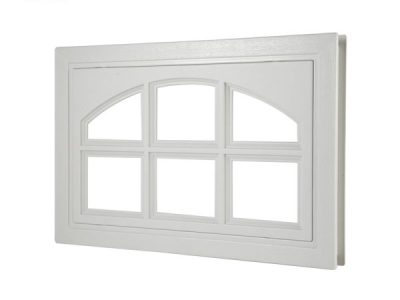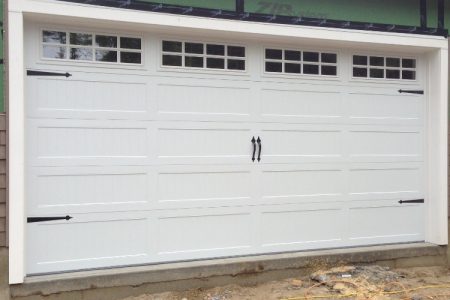How to ensure the safety of garage door tracks?
1.Regular inspection of garage door tracks
Regular inspection of your garage door tracks is a critical step in ensuring proper door operation, reducing breakdowns and improving safety. Here are some suggestions for regularly inspecting your garage door tracks:
Visual Inspections: Perform regular visual inspections to look for any cracks, rust, bends, or other obvious signs of damage in the tracks. Pay special attention to track joints and support structures.
Check the support structure: Make sure the support structure of the track is secure and there are no loose screws. Reinforcing the support structure ensures that the track is properly supported.
Measuring the track: Use a level and measuring tool to check the level and plumbness of the track. Abnormal track position may cause the door to be unstable or operate improperly.
Check the rollers: Check the condition of the rollers to make sure they are not worn, cracked or otherwise damaged. The wheel should spin freely with no signs of binding.
Lubricate the tracks: Lubricate the tracks with an appropriate lubricant to reduce friction. Make sure the lubricant is evenly distributed on the track and be careful not to use a lubricant that is too thick.
Check the chain or belt: If your garage door is driven by a chain or belt, check their condition. Make sure the chain or belt is properly tensioned and not worn or cracked.
Check safety features: If the door is equipped with safety features, such as sensors or an auto-stop function, test these features to make sure they function properly when needed.
Clean the Tracks: Regularly clean the tracks of dust, grease, or other debris to ensure they do not affect the operation of the door.
Test Door Operation: Periodically test the operation of your garage door to make sure there are no unusual noises or vibrations when it opens and closes. Pay attention to any unusual behavior.
Follow Manufacturer Recommendations: Follow the garage door manufacturer’s recommendations and maintenance manual to perform recommended maintenance procedures and safety inspections.
Regular inspections of your garage door tracks can help identify potential problems and resolve them promptly to ensure the safety and proper operation of your door. If any problems are found, it is best to ask professional technicians to inspect and repair them.
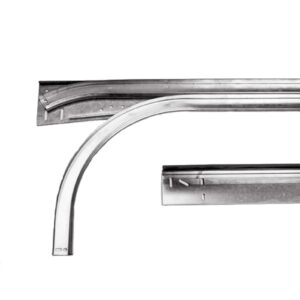
2.Garage door track inspection support structure
The support structure of your garage door track is critical to the stability and proper operation of your door. When performing a garage door track inspection, pay special attention to inspecting the support structure. Here are some suggestions:
Screws and Nuts: Check the screws and nuts that connect the track to the support structure. Make sure they are tight and not loose. Loose screws can cause the track to become unstable.
Brace: Visually inspect the condition of the brace. Make sure there are no obvious bends, cracks, or other damage to the support frame. Damaged supports can cause the track to become unbalanced.
Bolts and Connection Points: Check the bolts and connection points of the supporting structure. Make sure they are not rusted or corroded and are well tightened. Regular inspections can prevent bolts from being damaged by environmental factors.
Support beams: If the track is connected to support beams on the wall, check the installation of the beams. Make sure it is fastened to a solid structure and not loose or deformed.
Support posts: If support posts are used to support rails, make sure they are plumb and not bent. The stability of the support columns is crucial to the support of the track.
Uniformity of Support Structure: Check whether the support structure of the track is evenly distributed to avoid uneven loading. Uneven support can cause the track to become distorted or unbalanced.
Clear the surrounding space: Make sure there are no clutter or obstructions around the track that could interfere with the proper functioning of the support structure.
Attention to detail: Carefully inspect every detail of the support structure, especially joints and welds. Small damage can also cause problems over time.
During the inspection, if you notice any issues or are unsure about the condition of the supporting structure, it is recommended to seek professional garage door repair services. Ensuring a good support structure can improve the stability and security of your garage door.
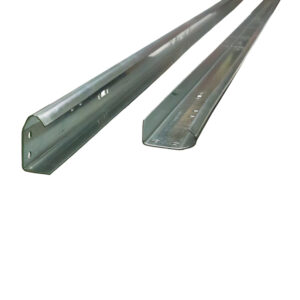
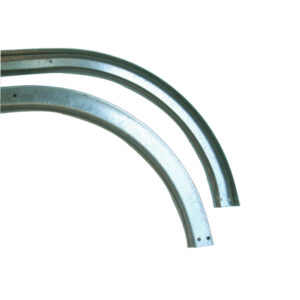
3.Garage door track lubrication track
Proper track lubrication is critical to ensuring your garage door operates smoothly and reduces friction. Here are some tips to help you properly lubricate your garage door tracks:
Choose the right lubricant: Use a lubricant suitable for garage door tracks. Common options include silicone-based lubricants, lubricants, or specially designed door lubricants. Avoid using lubricants that are too thick or attract dust.
Clean the tracks: Before lubricating, make sure the tracks are clean. Clean the tracks of dirt, grease, or other debris to ensure adequate penetration of the lubricant into the tracks.
Lubricate the rollers: Lubricate the bearings on the garage door rollers. Make sure the lubricant fully covers the roller bearing surface to reduce friction.
Lubricate the chain or belt: If your garage door is chain or belt driven, make sure you lubricate these parts. Check the manufacturer’s recommendations, a specialized chain lubricant may be needed.
Regular Lubrication: Tracks should be lubricated regularly, with the exact frequency depending on frequency of use and environmental conditions. Generally speaking, lubrication every few months is appropriate.
Avoid excessive lubrication: Do not use excessive lubricant to avoid excessive lubricant dripping on the ground or other parts, increasing cleanup work.
Check the effectiveness of lubrication: After lubrication, operate the garage door a few times to make sure the lubricant is evenly distributed and check for any improvement.
Be aware of seasonal changes: During seasons with larger changes in temperature and humidity, more frequent lubrication may be required to cope with different environmental conditions.
Remember, proper track lubrication helps reduce friction, improve garage door performance, and extend component life. Before lubricating, it’s a good idea to consult your garage door’s manufacturer’s manual to learn about their recommendations and regulations.
4.Garage door track adjustment track alignment
Adjusting garage door track alignment is an important step in ensuring proper door operation, preventing imbalance, and reducing friction. Here are some suggestions to help you adjust your garage door track alignment:
Check Track Alignment: Visually inspect your garage door tracks to make sure they are installed level and plumb. Abnormal track position may cause the door to be unstable or operate improperly.
Use a level and measuring tool: Use a level and measuring tool to check the level and plumbness of the track. This can help you determine exactly whether adjustments are needed.
Adjust the support structure: If you notice that the track is unbalanced, you may need to adjust the support structure. Make sure the support frame is secure and attached to a sturdy structure.
Adjust the screws and nuts: Adjust the screws and nuts that connect the rails to the support structure. Make sure they are tight and not loose.
Carefully adjust the roller position: Some garage door systems allow you to adjust the roller position to change the level of the door. Be careful when adjusting the wheel position to avoid causing further problems.
Check the verticality of the door: The door should be vertical when closed and should not have a significant tilt. If the door is tilted, the track may need to be adjusted to correct the problem.
Consult the Manufacturer’s Guide: Consult the garage door manufacturer’s guide for their specific recommendations and procedures for track adjustment. Different types of garage door systems may have different adjustment methods.
Gradual Adjustments: When making track adjustments, make small incremental adjustments and then test the operation of the door. Avoid over-adjustment, which can cause other problems.
If you are unsure about how to adjust your garage door tracks, or if the problem persists after adjustment, it is recommended to seek professional garage door repair services. Professional technicians can provide professional advice and ensure safe adjustment of track alignment.
5.Garage door track inspection rollers and chains/belts
Checking the rollers, chains, or belts on your garage door track is a critical step in ensuring the door is functioning properly. Here are some suggestions to help you inspect these parts:
Check the scroll wheel:
Visually inspect the rollers to make sure they have no obvious wear, cracks, or other damage.
Make sure the wheel spins freely and is not stuck or sluggish.
If you find severely worn rollers, consider replacing them, making sure to use replacements that meet the manufacturer’s specifications.
Check the chain or belt:
If the doors are chain or belt driven, check their overall condition.
Make sure the chain or belt has no obvious wear, cracks or looseness.
If you find problems with your chain or belt, you may need to replace them. Make sure to choose a replacement that matches the original specifications.
Check bearings:
If there are bearings on the rollers, check that the bearings are functioning properly. Make sure the bearings are not loose or damaged.
If there is a problem with the bearings, the entire roller assembly may need to be replaced to ensure smooth operation on the track.
Lubricate rollers and chains/belts:
Lubricate the bearings of the rollers and the chain or belt with a suitable lubricant. This helps reduce friction and ensures the door operates smoothly.
Follow the manufacturer’s recommendations for a lubricant suitable for roller bearings and chains/belts.
Check chain or belt tension:
If the door is chain or belt driven, make sure the chain or belt is properly tensioned. Being too tight or too loose can cause problems.
Refer to the manufacturer’s guidelines to adjust chain or belt tension.
Clean up clutter:
Make sure the track is clear of debris, especially in the path of the rollers and chains/belts. Debris can cause jamming or improper operation.
Test the operation of the gate:
After inspection and lubrication, test door operation to make sure the rollers and chain/belts are working properly and there are no unusual noises or vibrations.
Regular inspection and maintenance of your garage door’s rollers, chain, or belt is a critical step in ensuring your door operates efficiently for a long time. If you find any problems, take immediate repair measures or seek professional garage door repair services.

